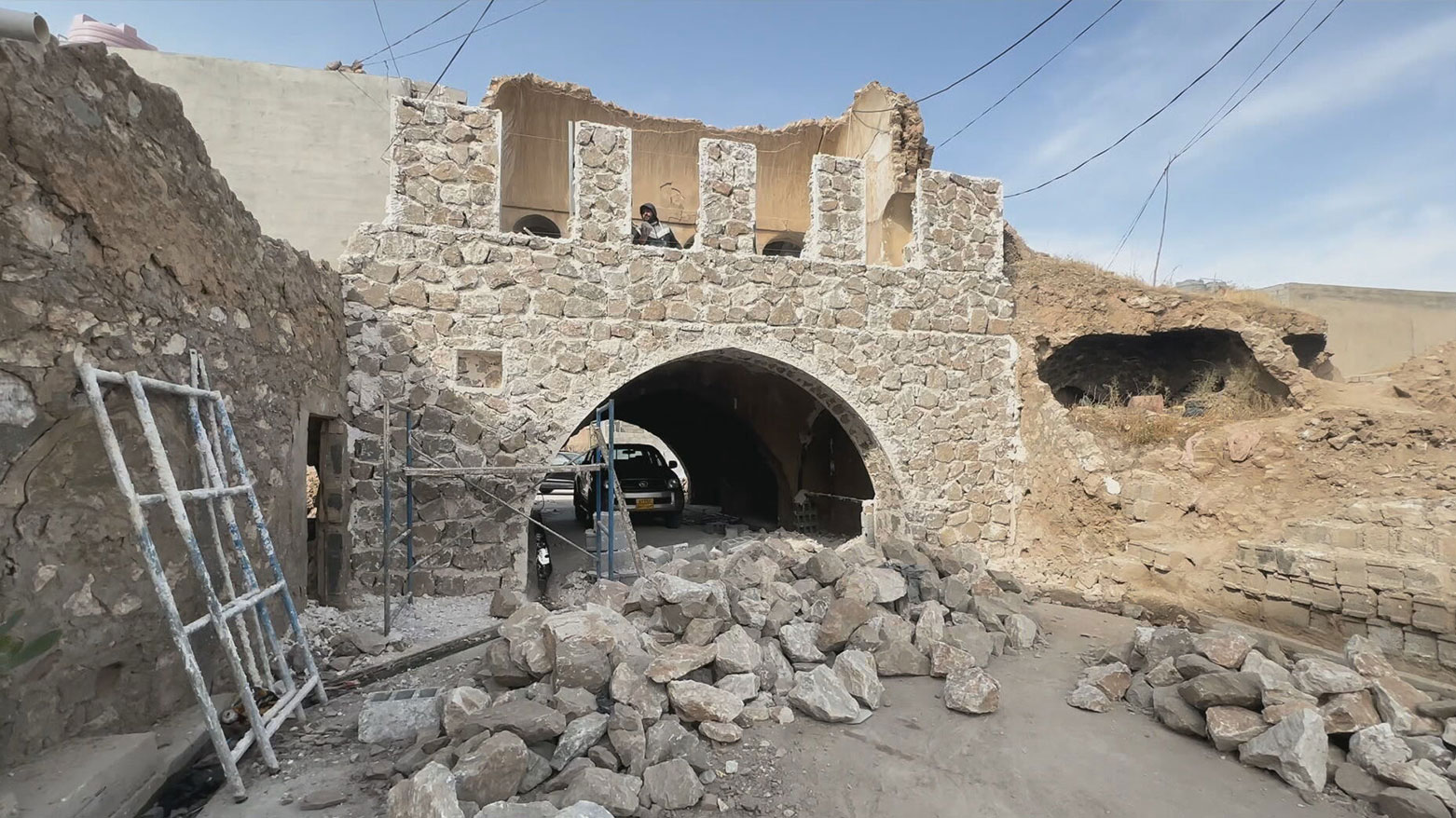Kifri Launches Campaign to Restore Historical Heritage Sites
“Kifri is rich with archaeological and heritage sites, including the Kifri Saray, the traditional Qaysari Bazaar, the Dawood Zarifa house, and the Majid Pasha Babaan Palace,” said Ubaid Mohammed.

By Ahora Qadi
ERBIL (Kurdistan24) – The local authorities in Kifri a Kurdish district situated outside Kurdistan Regions Government administrative control, in Diyala province, have embarked on an ambitious restoration campaign to rehabilitate its cultural, historical, and archaeological sites, following years of neglect and deterioration. The initiative seeks to safeguard the region’s rich heritage and promote cultural tourism in the area.
Reviving Ancient Gateways
Speaking to Kurdistan 24, Imad Ismail, a researcher specialized in archaeological heritage, said that one of the campaign’s central efforts focuses on the historic "Kifri Hill Gate," a once-prominent arched structure that historically connected Kifri to the Sulaymaniyah Gate.
“The gate was originally built in an arched design, and we are currently restoring it in the same ancient architectural style,” Ismail explained. “We brought in a specialized team from Mosul with expertise in handling original construction materials such as stone and clay, which were traditionally used in these structures.”
Uncovering Forgotten Treasures
Ubaid Mohammed, the director of Kifri’s Department of Antiquities, confirmed in remarks to Kurdistan 24 that the district harbors a wealth of historical landmarks that have long been overlooked.
“Kifri is rich with archaeological and heritage sites, including the Kifri Saray, the traditional Qaysari Bazaar, the Dawood Zarifa house, and the Majid Pasha Babaan Palace,” he said. “There are also ancient wells, burial sites, and an underground city known as Qara Oghlan, which remains untouched by excavation efforts to this day.”
Long-Term Preservation Strategy
According to Mohammed, the broader restoration campaign has been underway for over a year and involves phased work across multiple sites.
“We began with the Kifri Saray, followed by the restoration of the Hassan Fandi House. Currently, we are continuing rehabilitation works across other sites as part of a comprehensive preservation plan,” he noted.
Heritage Protection Meets Tourism Development
Project coordinators and local officials hope the restoration drive will not only preserve the historical fabric of Kifri but also stimulate cultural tourism and strengthen public awareness around the importance of heritage conservation.
“The restoration of archaeological sites is a pivotal step in preserving Kifri’s historical and civilizational identity,” said one of the campaign’s coordinators, adding that renewed focus on cultural landmarks may transform Kifri into a vibrant destination for heritage tourism in the future.
